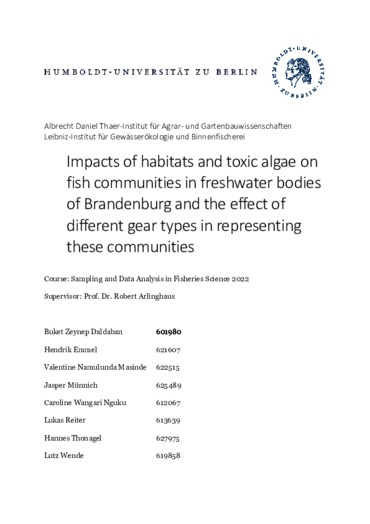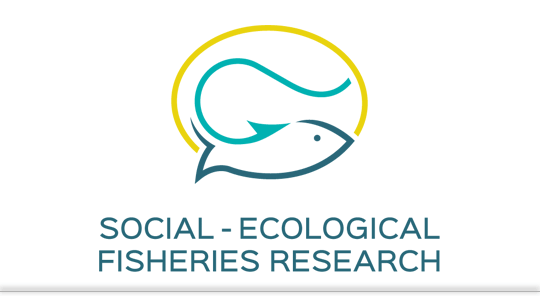The basis for successful management of fish communities is an accurate assessment of community characteristics like species composition, abundance, and size distribution. However, numerous impacts need to be considered during the assessment and when implicating the results into management actions. Here, we provide new insights into environmental impacts on fish communities and selectivity of fishing gears. Species-specific requirements on habitat characteristics structure fish communities among environmental gradients. We compared electrofishing samples of the fish communities of stagnant, densely vegetated floodplain lakes (polders) with the main channel of the river Oder. Limnophilic and phytophilic fish species have been more abundant in polders, and interestingly, abundance of rheophilic species did not differ between habitat types. The biomass per unit effort was higher in the polder, but better conditioned fish were found in the river. Further, we studied the impact of a toxic algae bloom on the river Oder fish community by comparing long-term before and after data. Biomass declined significantly and fish community composition changed drastically. Some species could not be detected after the fish kill at all, especially larger species, in particular those belonging to the rheophilic group. Beside environmental determinants, fish community assessments are impacted by the selectiveness of fishing gears. In our third study, we investigated the selectivity of electrofishing and gill nets, by using both methods for assessing the littoral fish community of a German lowland lake. Results show clear differences between methods, as more phytophilic species were caught with electrofishing. When placing the gill nets in the deeper littoral (>3m) fish abundance was higher. Lastly, we explored the role of gill net configuration on catch outcome in multi mesh gillnets, by comparing three net types that differed in their panel length (2.5m, 5m, 10m). Mean size of captured fish was largest in 5m net types, which also captured more roach (Rutilus rutilus). Our studies provide evidence for the sensibility of fish communities to environmental impacts, especially their vulnerability to toxic algae blooms. Furthermore, the results elucidate knowledge gaps on fishing gear composition and contribute essential knowledge for accurately assessing fish communities. This will direct future studies and aid management of fish communities.
Impacts of habitats and toxic algae on fish communities in freshwater bodies of Brandenburg and the effect of different gear types in representing these communities
Study

Daldaban, B.Z., Emmel, H., Masinde, V.N., Münnich, J., Nguku, C.W., Reiter, L., Thonagel, H., Wende, L. 2022. Impacts of habitats and toxic algae on fish communities in freshwater bodies of Brandenburg and the effect of different gear types in representing these communities. Studentenprojekt, Humboldt-Universität zu Berlin, Leibniz-Institut für Gewässerökologie und Binnenfischerei (IGB) Berlin.
Published
: 2022
Appeared in
: Studentenprojekt, Humboldt-Universität zu Berlin, Leibniz-Institut für Gewässerökologie und Binnenfischerei (IGB) Berlin
